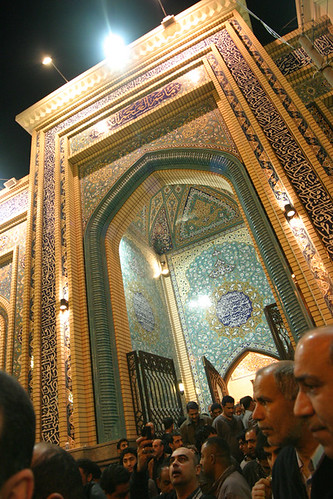Marsiya: The term marsiya (also marthia) a derivative of the Arabic word ritha is translated as a song of lamentation or elegy. Traditionally the Arabic marsiya used to be a short poetical lament expressing the poet’s sense of grief on the loss of a friend or a tribal hero.
With the tragedy of Karbala, it acquired a spiritual content which became the central defining theme, transforming a short personalized and somewhat secular genre into an elegiac epic representing the religious outpouring of grief for a whole community. Thus the marsiya was no longer a poem of pensive melancholy alone but rather a dramatic saga of everlasting conflict between good and evil, a definitive story with a set pattern of characters and happenings which had to be respected.
Kashmiri Marsiya
The advent of Islam into Kashmir in the early part of the 14th century also resulted in the introduction of marsiya into this region. The earlier marsiyas traces of which have mostly been lost closely followed the Persian format as most of the Muslim missionaries hailed from Iran or areas with heavy Iranian influences. One of the extant marsiya dating back to this period has its first stanza in Persian followed by another in Kashmiri, almost serving as a virtual translation. Though these early marsiyas showed an understandable stamp of the established Persian format, but soon local influences and ideas also got assimilated because though the subject matter was alien to Kashmir- the notion of lamenting a loss was not. Lyrical expression of grief has been a universal phenomenon pervading diverse cultures and times. The Kashmiri martsiya very soon set a distinct tone for itself by departing from the Arabic, Persian or Indian mode of recitation turning into a marvel of elegies.
Whereas in these places the rendering of marsiya was in form of a solo recital, in Kashmiri marsiyas came to be recited collectively by the audience. This mode of recitation was also a representation of the indigenous Kashmiri culture. For in Kashmir the local folk song known as “roff” was and is still sung collectively. A collective recitation had to be independent from individual nuances; in fact the very model of recital demanded a set uniform tone and tenor-wazn which had to be respected.
In another major departure from the Persian or Indian mode of marsiya recitation, the Kashmiri poet (musanif) never recites the marsiya himself. Once the marsiya is written it was handed over to the zakir for public recital. The profession of zakirs was hereditary and no zakir could recite a marsiya that had been given to members of a different family. The zakir would also receive monetary rewards from the poet for reciting his work-the hadiyya.
It’s worthwhile to remember that due to the communal or more precisely-the collective mode of recitation, Kashmiri marsiya were far more adaptable to the change in language and as such some of the older and archaic words were continuously rooted out as and when their usage in common speech became outdated. Thus we find that even in case of marsiya written only a century back- the current “in vogue” form with the audience involves a subtle deviation from the written form-dictated mostly by the spirit of the audience and the zakirs modifications. Hence one usually finds a certain “modernity of form and diction” in some of the older, medieval marsiya that could otherwise indicate a more recent date for these works. The periodic adaptations that many of the marsiyas have gone through have over the years helped in bridging the gap between the written and spoken language. This has resulted in bringing the verses of the poet nearer to the time -period and language of the audience, a unique feature of the Kashmiri marsiya.
Structure : The structure of the Kashmiri marsiya as it evolved in this period comprised of four essential parts: Hamd: The introductory stanza or tcheer as it is called, in praise of Allah, his glorification and seeking of his mercy. Naat: In praise of Prophet Mohammad and seeking his intercession for securing Allah’s mercy. Madaah: In praise of the family of the Prophet Mohammad, their character, nobility, grace and miracles associated with them. Dardh: The elegy proper it deals with the events of Karbala. The term tcheer is actually derived from a similar Kashmiri word used for the stick that carpet weavers use to separate two layers of threads. Similarly in a marsiya, the tcheer separates the upper and the lower stanza. Each tcheer or stanza is then divided on the basis of metre, which delineates the structural format of the marsiya. The new style of marsiya that evolved in this period coincided with a period of political stability and relative religious freedom for the Shi’a community of Kashmir. That this evolutionary process was delayed for a long period is reflective of the extreme duress and constrained conditions of the Shi’a community in the preceding centuries.

